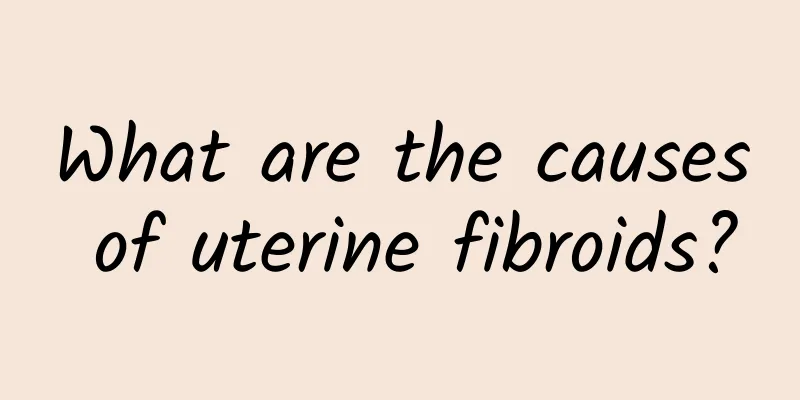When should uterine fibroids be removed? When should uterine fibroids be removed?

|
When should uterine fibroids be removed? When should uterine fibroids be removed? Uterine fibroids are a common gynecological tumor that is widely found in the uterine lining tissue of women. Although most uterine fibroids are benign, in some cases, it is necessary to remove the uterine fibroids. So, when should uterine fibroids be removed? When does uterine fibroids require surgery? This article will explain in detail. When symptoms seriously affect the quality of life, it is necessary to remove the uterine fibroids. Some women with uterine fibroids experience symptoms such as irregular menstruation, excessive and long menstrual periods, and dysmenorrhea. These uncomfortable symptoms can cause great trouble in daily life and work, and in severe cases can even lead to anemia. If these symptoms cannot be relieved by medication or other non-invasive methods, it is necessary to consider removing the uterine fibroids. Surgery can effectively remove fibroids, relieve symptoms, and improve quality of life. Fibroids may also need to be removed when they become larger or cause other gynecological problems. Fibroids grow at different rates, but in some cases, they continue to grow. If they grow large enough, they may put pressure on the bladder, causing urinary symptoms such as frequent and urgent urination. Fibroids may also put pressure on the rectum, causing difficulty passing stool. Fibroids can also coexist with gynecological problems such as endometriosis. In these cases, removing the fibroids can relieve pain and discomfort while preventing and reducing the occurrence of other diseases. Third, surgery is also needed when uterine fibroids cause infertility or multiple miscarriages. Although most uterine fibroids do not have a significant impact on fertility, the situation may be different for some women with special types and locations of fibroids. For example, uterine fibroids located under the endometrium may affect the implantation and development of the embryo, leading to infertility or multiple miscarriages. In this case, removing the uterine fibroids can significantly improve the chances of a successful pregnancy and increase the survival rate of the embryo. When should uterine fibroids be removed, and when do uterine fibroids require surgery? When there are severe symptoms that affect the quality of life, when the fibroids grow larger or cause other gynecological diseases, and when uterine fibroids cause infertility or multiple miscarriages, surgical treatment should be considered. Surgery can relieve symptoms, prevent and reduce the occurrence of other diseases, and increase the chances of successful fertility for women who want to get pregnant. Therefore, it is crucial to seek help from a doctor as soon as possible and decide whether to undergo surgery to remove uterine fibroids based on personal circumstances. |
Recommend
The main factors that cause dysmenorrhea
I believe that many female friends should be fami...
Dark chocolate not only protects your heart, but also reduces the risk of stroke! Nutritionist Zhao Hanying: 4 must-know benefits of chocolate
Chocolate is popular among girls because of its s...
What care methods do you know for cervicitis?
What are the care methods for cervicitis? There a...
Understand the causes of cervical erosion in women
Women's health is very important to people, a...
Can I drink fish maw chicken soup after having an abortion?
Abortion refers to artificial abortion. After art...
Which hospital is good for treating vaginitis?
Which hospital is good for treating vaginitis? Th...
How to check for cervical warts?
Can cervical warts be detected by blood tests? Bl...
What are the symptoms of uterine fibroids? What are the prevention methods of uterine fibroids?
How to detect the symptoms of uterine fibroids an...
What causes pelvic inflammatory disease?
Pelvic inflammatory disease is an inflammation of...
Eating the right starch can help you lose weight! This red bean and white fungus soup helps you control calories
Many people's way of losing weight is to quit...
Common clinical symptoms of vulvar leukoplakia
What is vulvar leukoplakia? Many female patients ...
Long-term constipation can lead to adnexitis
Xiao Wei is a real white-collar worker. The offic...
What foods can I eat if I have cervical erosion?
What foods can you eat for cervical erosion? Cerv...
What are the symptoms of postmenopausal cervical adhesions?
Common symptoms of postmenopausal cervical adhesi...
What supplements can my wife take for uterine fibroids? What should patients with uterine fibroids eat?
What supplements can my wife take for uterine fib...









